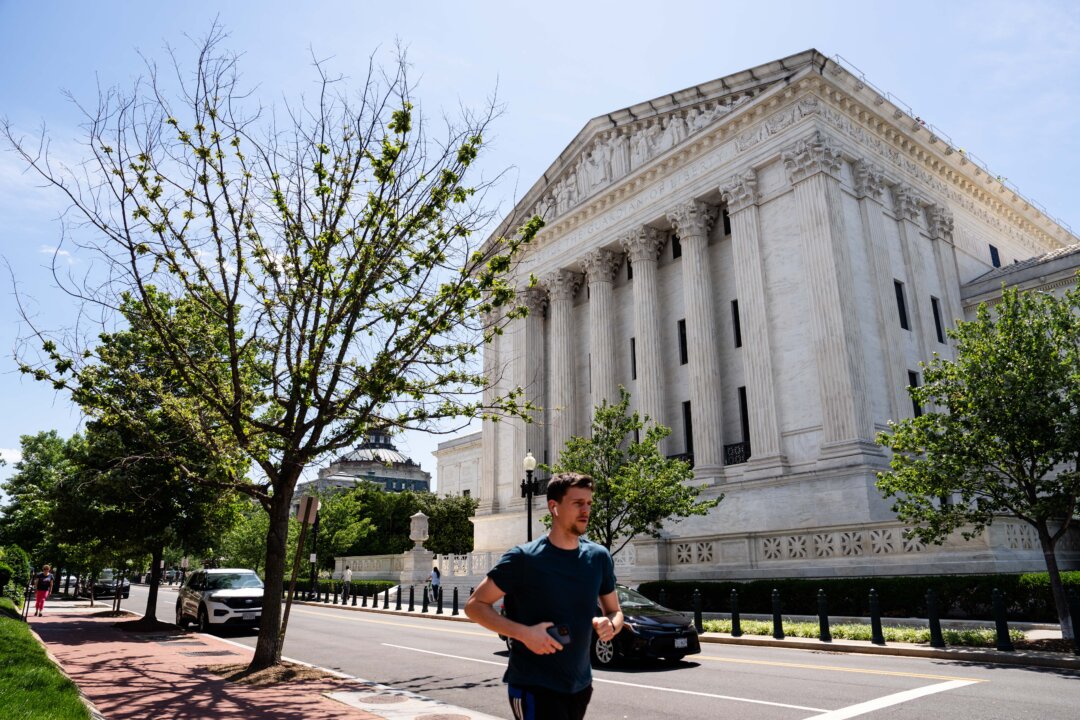The case proceeds in the Ninth Circuit court of appeals as the legal fight over sweeping federal workforce reductions continues.
The Trump administration has withdrawn its emergency appeal to the U.S. Supreme Court in a case challenging a lower court order that blocked mass federal workforce cuts, opting instead to pursue relief through the Ninth Circuit—with the option to escalate back to the high court if necessary.
The Supreme Court on May 27 formally withdrew the emergency appeal at the Trump administration’s request, following a May 23 letter from Solicitor General John Sauer stating that the government would instead prefer to challenge the lower court’s ruling in the U.S. Court of Appeals for the Ninth Circuit. The shift came after a federal judge upgraded a temporary restraining order into a preliminary injunction, prompting the administration to adjust its legal approach that gives it the option to return to the high court later.
The case centers on an executive order signed by President Donald Trump on Feb. 11 that directed all federal agencies to begin large-scale “reductions in force” (RIFs) as part of a sweeping plan to restructure the federal government and eliminate “waste, bloat, and insularity.” The move was part of the administration’s Department of Government Efficiency initiative to identify wasteful and fraudulent government spending, and was coordinated through the Office of Personnel Management and the Office of Management and Budget.
Since the executive order took effect, the Trump administration has fired or incentivized the departure of approximately 130,000 federal employees through a combination of reductions in force, buyouts, and early retirements, according to the Center on Budget and Policy Priorities. The layoffs have impacted agencies including the Department of Health and Human Services, the Department of Education, and the Department of Housing and Urban Development, with some offices reporting staffing reductions of 50 percent or more.
In response to the mass firings, a coalition of labor unions, nonprofit organizations, and local governments filed suit on April 28 in the Northern District of California, arguing that the executive order overstepped the president’s constitutional authority by initiating agency-wide layoffs and reorganizations without congressional approval. Plaintiffs include the American Federation of Government Employees, the Alliance for Retired Americans, and the governments of Chicago, Baltimore, and San Francisco.
On May 9, U.S. District Judge Susan Illston issued a 42-page temporary restraining order halting implementation of the executive order for two weeks, finding the plaintiffs were likely to succeed on the merits of their claims.
“It is the prerogative of presidents to pursue new policy priorities and to imprint their stamp on the federal government,” Illston wrote. “But to make large-scale overhauls of federal agencies, any president must enlist the help of his co-equal branch and partner, the Congress.”
In her ruling, Illston said that the Office of Personnel Management, the Office of Management and Budget, and the Department of Government Efficiency lacked the statutory authority to compel agencies to carry out mass layoffs or submit restructuring plans.
In response, the Trump administration filed an emergency appeal with the Supreme Court on May 16, asking it to lift Illston’s temporary restraining order and allow the layoffs to proceed. In the application, Sauer criticized the lower court’s order as a broad overreach that undermines executive authority.
“That far-reaching order bars almost the entire Executive Branch from formulating and implementing plans to reduce the size of the federal workforce, and requires disclosure of sensitive and deliberative agency documents that are presumptively protected by executive privilege—and it does all of that based on the extraordinary view that the President lacks authority to direct executive agencies how to exercise their statutory powers to conduct large-scale personnel actions within the Executive Branch,” he wrote.
While the Trump administration’s request was pending before the Supreme Court, the lower court judge on May 22 converted her temporary restraining order into a preliminary injunction, effectively extending the block on Trump’s order for the duration of the legal proceedings. She also barred the administration from closing offices, transferring programs, or otherwise reorganizing agencies without legislative authority. Illston’s order prevents about 20 federal agencies from complying with Trump’s reduction-in-force order.
A day after Illston issued her preliminary injunction, the Trump administration decided to pivot to the Ninth Circuit, where it filed a supplemental emergency motion asking the appellate court to block the preliminary injunction no later than May 30.
“Congress authorized agencies to conduct RIFs [reductions in force], and the President may tell agencies to use their statutory authorities to accomplish policy goals,” the motion states. “No statutory text supports the court’s suggestion that agencies may not conduct RIFs at large scale, and plaintiffs’ speculation that agencies may violate their organic statutes in reducing their workforces provides no basis for the injunction.”
Alongside the emergency motion filed at the Ninth Circuit, Sauer on May 23 asked the Supreme Court to withdraw the Trump administration’s appeal, which the high court formally did on May 27, clearing the way for the case to proceed at the appellate level.
If the appeals court fails to overturn the injunction, the administration has the option to return to the Supreme Court to seek relief to continue with its federal workforce reduction plans, which are part of Trump’s effort to downsize government in the face of ballooning deficits and public debt.

